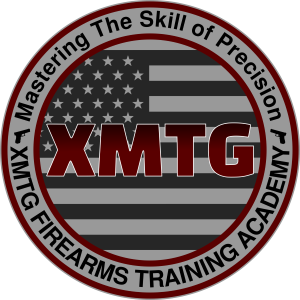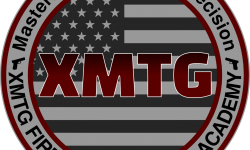Yesterday we had a rifle/pistol class at our range near Dallas, TX. The weather was hot but we were able to get in some good training.
This student has taken several of our group classes, but he wanted individual instruction so that he could hone a few particular skills. Further, his past training consisted of drawing and firing in self defense from a standard waistband holster, but he wanted to try out his concealed-carry setup that he uses day-to-day. I was a bit skeptical of the way he preferred to carry, since it was in an unconventional type of holster, housed on a less-than-ideal part of his frame. But not everyone works in law enforcement or has the luxury of carrying in a traditional holster, so he chose this method since it was most compatible with his daily routine.
But the million dollar question was, “In a stressful situation, can he actually produce a weapon reliably and safely?” We devised a safe drill that would allow us to try out his concealed carry “theory.”
What we learned was that this nifty holster setup he purchased, while an okay idea on paper, simply doesn’t work well in stress-fire drills. By the end of the class, this student decided to go a different direction with his concealed carry holstering.
This is easily the best part about our shooting school/range setup. Had this student gone to any of the indoor ranges in the Metroplex, they wouldn’t have allowed him to practice drawing and shooting; that’s not allowed at any of the ranges in the area. But of greater concern, standing there shooting at a paper target in the air conditioning might be relaxed, but it sure the heck wouldn’t teach this shooter how well his concealed carry setup would work in any kind of dynamic defensive scenario.
Now, there are some firearms trainers out there who would have dismissed his novel holstering theory outright or who would have imposed on this student their own preferred methods. But I’m a firm believer that it is the role of the firearms instructor to find what works best for each individual. Sure, all students are taught the same tried and true fundamentals I’ve learned in the military and in my many years in law enforcement and as a SWAT team member, but I also encourage them to build upon those fundamentals through some measure of an individualized approach.
If you look at the equipment used by members of most seasoned special forces teams, SWAT teams, etc., the one thing you’ll find in common is that their choice of weapons, holsters, where they store their ammo, etc. is varied (when they have the freedom to make such choices). The simple fact of the matter is that some people will be more effective with X kind of holster or Y caliber of pistol or a rifle with a vertical foregrip or spare magazines tucked into their belt instead in a backpack or whatever. My job is to make them effective, not to force on them my own personal ethos as to every detail of their defensive strategy.
That’s the beauty of personalized weapons training. You get a chance to try out all the ideas that you think might work and then find out if you’re right without having to figure all this out as you’re being robbed, protecting your home from a burglar, etc.
As for the rifle portion of his training, we configured a dynamic test wherein he would have to round a corner, clear a room, and engage bad guy targets, which he couldn’t see until he was in the simulated room. Again, shooting at paper targets in the AC doesn’t get the job done. Learning how to respond to an unpredictable situation and put rounds on target when your blood’s pumping is what it’s all about.
If you would like to participate in one of our Dallas tactical rifle class or pistol class, or if you’re ready for individual instruction, give us a call at 972-742-5079. We can create a custom class to meet your needs.






You must be logged in to post a comment.